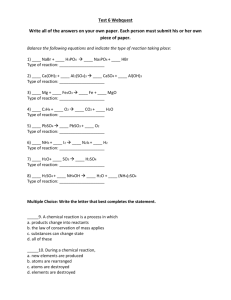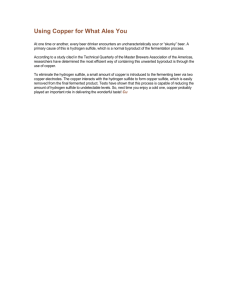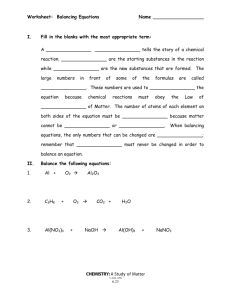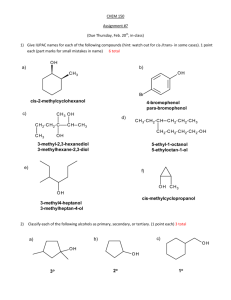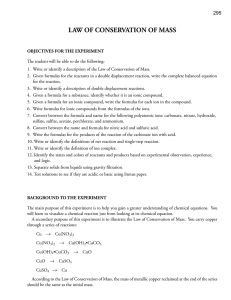Edexcel IGCSE Chemistry Chapter 9, pages 79
advertisement
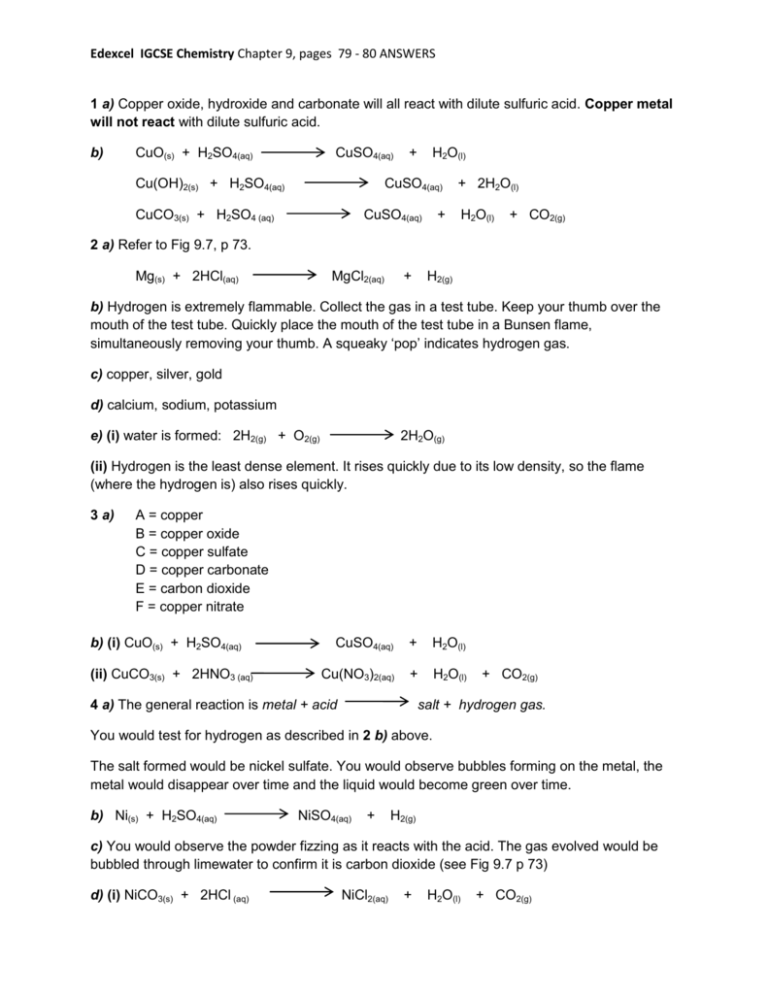
Edexcel IGCSE Chemistry Chapter 9, pages 79 - 80 ANSWERS 1 a) Copper oxide, hydroxide and carbonate will all react with dilute sulfuric acid. Copper metal will not react with dilute sulfuric acid. b) CuO(s) + H2SO4(aq) CuSO4(aq) Cu(OH)2(s) + H2SO4(aq) + H2O(l) CuSO4(aq) CuCO3(s) + H2SO4 (aq) CuSO4(aq) + 2H2O(l) + H2O(l) + CO2(g) 2 a) Refer to Fig 9.7, p 73. Mg(s) + 2HCl(aq) MgCl2(aq) + H2(g) b) Hydrogen is extremely flammable. Collect the gas in a test tube. Keep your thumb over the mouth of the test tube. Quickly place the mouth of the test tube in a Bunsen flame, simultaneously removing your thumb. A squeaky ‘pop’ indicates hydrogen gas. c) copper, silver, gold d) calcium, sodium, potassium e) (i) water is formed: 2H2(g) + O2(g) 2H2O(g) (ii) Hydrogen is the least dense element. It rises quickly due to its low density, so the flame (where the hydrogen is) also rises quickly. 3 a) A = copper B = copper oxide C = copper sulfate D = copper carbonate E = carbon dioxide F = copper nitrate b) (i) CuO(s) + H2SO4(aq) (ii) CuCO3(s) + 2HNO3 (aq) CuSO4(aq) + H2O(l) Cu(NO3)2(aq) + H2O(l) 4 a) The general reaction is metal + acid + CO2(g) salt + hydrogen gas. You would test for hydrogen as described in 2 b) above. The salt formed would be nickel sulfate. You would observe bubbles forming on the metal, the metal would disappear over time and the liquid would become green over time. b) Ni(s) + H2SO4(aq) NiSO4(aq) + H2(g) c) You would observe the powder fizzing as it reacts with the acid. The gas evolved would be bubbled through limewater to confirm it is carbon dioxide (see Fig 9.7 p 73) d) (i) NiCO3(s) + 2HCl (aq) NiCl2(aq) + H2O(l) + CO2(g) Edexcel IGCSE Chemistry Chapter 9, pages 79 - 80 ANSWERS (ii) Ni2+(aq) + CO32-(aq) + 2H+(aq) + 2Cl- (aq) Ni2+(aq) + 2Cl- (aq) + H2O(l) + CO2(g) 5 a) b) c) d) e) f) g) acid H2SO4 H+ HCl HCl HCl base MgO CO32- (because combines with protons – a base is a proton acceptor) Not acid-base H2O Not acid-base NH3 NaOH 6 a) (i) (ii) An acid is defined as a proton donor. By this definition, the water molecule is the acid. A base is defined as a proton acceptor. By this definition the hydride ion is the base. b) hydrogen gas and a hydroxide ion (sodium hydroxide, in solution) c) bubbles of gas, fizzing d) alkaline 7 This must be a fair test, so you will only change one variable: the amount of copper sulfate. You will weigh and measure all quantities using appropriate equipment. You will record the rate of reaction by measuring the volume of H2 gas evolved in a given time. The apparatus is shown in Fig. 9.7, p 73.


